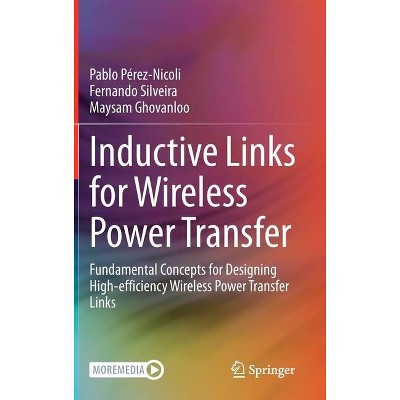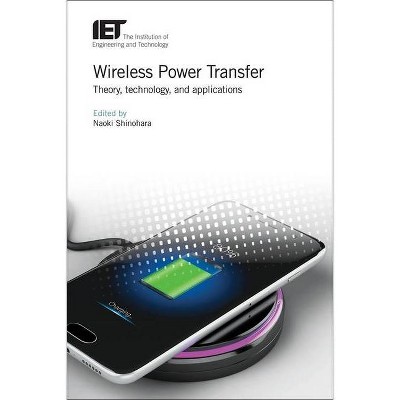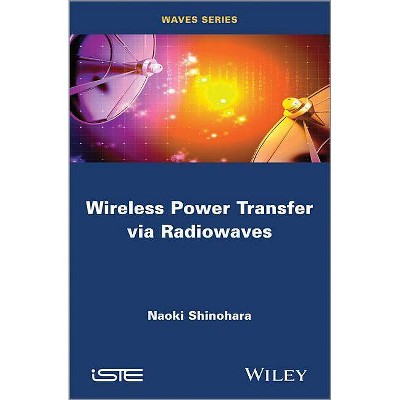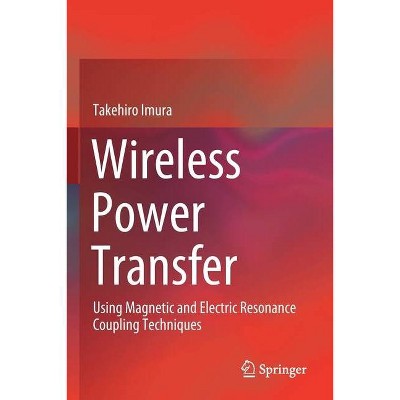Inductive Links for Wireless Power Transfer - by Pablo Pérez-Nicoli & Fernando Silveira & Maysam Ghovanloo (Hardcover)

Similar Products
Products of same category from the store
AllProduct info
<p/><br></br><p><b> Book Synopsis </b></p></br></br><p>Introduction to Wireless Power Transfer.- Inductive Wireless Power Transfer.- Inductive Link: Practical Aspects.- Back telemetry.- Achieving the Optimum Operating Point (OOP).- Adaptive circuits to track the Optimum Operating Point (OOP).- Closed-loop WPT links.- System Design Examples.</p><p/><br></br><p><b> From the Back Cover </b></p></br></br><p>This book presents a system-level analysis of inductive wireless power transfer (WPT) links. The basic requirements, design parameters, and utility of key building blocks used in inductive WPT links are presented, followed by detailed theoretical analysis, design, and optimization procedure, while considering practical aspects for various application domains. Readers are provided with fundamental, yet easy to follow guidelines to help them design high-efficiency inductive links, based on a set of application-specific target specifications. The authors discuss a wide variety of recently proposed approaches to achieve the maximum efficiency point, such as the use of additional resonant coils, matching networks, modulation of the load quality factor (Q-modulation), and adjustable DC-DC converters. Additionally, the attainability of the maximum efficiency point together with output voltage regulation is addressed in a closed-loop power control mechanism. Numerous examples, including MATLAB/Octave calculation scripts and LTspice simulation files, are presented throughout the book. This enables readers to check their own results and test variations, facilitating a thorough understanding of the concepts discussed. The book concludes with real examples demonstrating the practical application of topics discussed.<br></p><p></p><ul><li>Covers both introductory and advanced levels of theory and practice, providing readers with required knowledge and tools to carry on from simple to advanced wireless power transfer concepts and system designs;</li><li>Provides theoretical foundation throughout the book to address different design aspects;</li><li>Presents numerous examples throughout the book to complement the analysis and designs;</li><li>Includes supplementary material (numerical and circuit simulation files) that provide a "hands-on" experience for the reader;</li><li>Uses real examples to demonstrate the practical application of topics discussed.</li></ul><p></p><p/><br></br><p><b> About the Author </b></p></br></br><p>Pablo Pérez-Nicoli received the degree in electrical engineering in 2013 and the Ph.D. degree in 2018 from the Universidad de la República, Montevideo, Uruguay. In 2012, he joined the Electrical Engineering Department, Universidad de la República, where he is currently a Research Assistant. His current research interests include wireless power transmission and ultra low-power analog integrated circuits design.</p> <p> </p> Fernando Silveira received the degree in electrical engineering from the Universidad de la República, Montevideo, Uruguay, in 1990, and the M.Sc. and Ph.D. degrees in microelectronics from the Universitè catholique de Louvain, Louvain-la-Neuve, Belgium, in 1995 and 2002, respectively. He is currently a Professor with the Electrical Engineering Department, Universidad de la República. His current research interests include the design of ultra low-power analog and RF integrated circuits and systems, in particular with biomedical application. In this field, he has coauthored one book and many technical papers. He has had multiple industrial activities including leading the design of an application specified integrated circuit for implantable pacemakers and designing analog circuit modules for implantable devices for various companies worldwide.<p></p> <p> </p> Maysam Ghovanloo received the B.S. degree in electrical engineering from the University of Tehran in 1994, and the M.S. degree in biomedical engineering from the Amirkabir University of Technology, Tehran, Iran in 1997. He also received the M.S. and Ph.D. degrees in electrical engineering from the University of Michigan, Ann Arbor, in 2003 and 2004, respectively. From 2004 to 2007 Dr. Ghovanloo was an Assistant Professor in the Department of ECE at the North Carolina State University, Raleigh, NC. From 2007 to 2019 was with the Georgia Institute of Technology School of Electrical and Computer Engineering. In 2012 he started Bionic Sciences Inc. to develop advanced medical devices, where he serves as the CTO. He has authored or coauthored more than 250 peer-reviewed conference and journal publications on implantable microelectronic devices, integrated circuits and microsystems for medical applications, and modern assistive/rehabilitation technologies. He also holds 10 issued patents.<p></p>
Price History
Price Archive shows prices from various stores, lets you see history and find the cheapest. There is no actual sale on the website. For all support, inquiry and suggestion messages communication@pricearchive.us




















